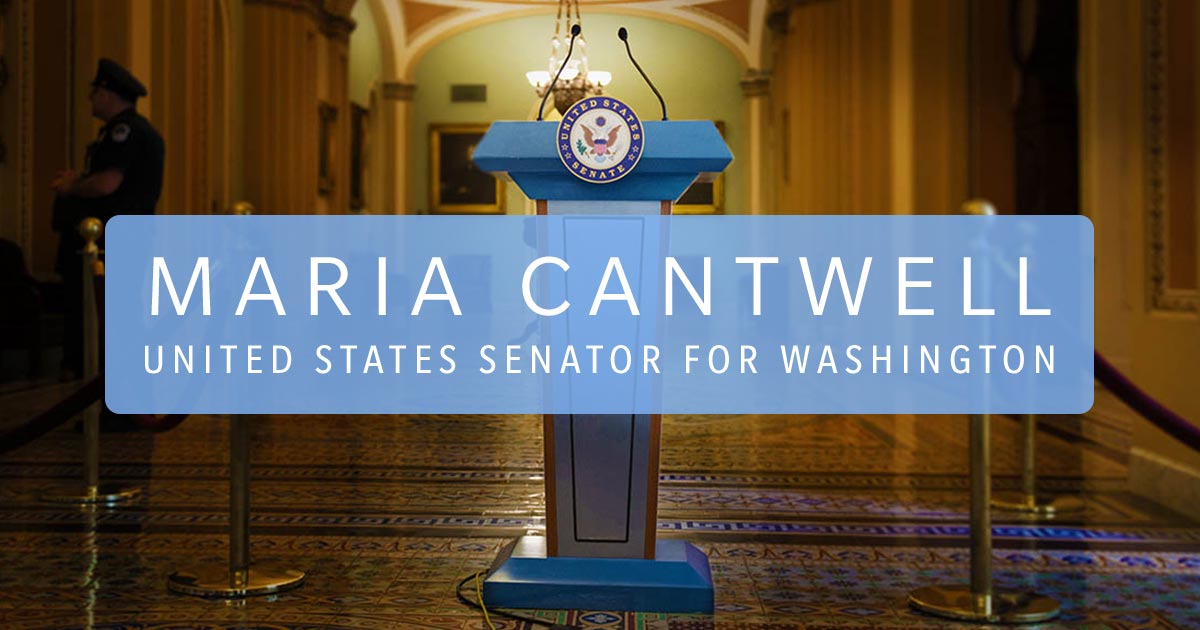Source: United States Senator for Washington Maria Cantwell
Cantwell Announces $370 Million for Washington state Transit Agencies
34% increase in transit funding from last year; includes $110M for King County Metro, $78M for Sound Transit
WASHINGTON, D.C. – Today, U.S. Senator Maria Cantwell (D-WA), the Chair of the Senate Committee on Commerce, Science, and Transportation, announced that Washington state will receive $370 million in federal transit funding from the Infrastructure Investment and Jobs Act (IIJA) in Fiscal Year 2022. Washington state’s total apportionment, as reported by Federal Transit Administration, is $369,533,187 for FY2022. This is a 33.7% increase over the FY2021 total of $276,371,879.
“For the shipyard worker who rides the pre-dawn bus every morning, or the retiree with monthly medical appointments, this announcement means more reliable, more comfortable transit service,” said Senator Cantwell. “Transit agencies across Washington will put this funding toward the day-to-day operation of our buses, light rail lines, ferries, and paratransit services. I’m proud to announce that our transit agencies will get 34% more than last year, and I’m going to keep working to get the investments we need for a world-class transit system in Washington state.”
These are the FY2022 funding totals for Washington’s major metropolitan areas, as reported by the FTA:
- Seattle-Tacoma-Everett (I-5 Corridor): $265,812,966
- Spokane: $12,223,495
- Kennewick-Pasco: $9,666,662
- Bremerton: $435,920
- Portland-Vancouver: $104,317,628
The bulk of the funds will be distributed to transit agencies in large urban areas by Metropolitan Planning Organizations (MPOs) such as the Puget Sound Regional Council (PSRC).
Below are estimated funding amounts for Puget Sound area transit agencies courtesy of PSRC.
|
Agency |
Amount |
|
Community Transit |
$18,386,841 |
|
Everett Transit |
$1,813,749 |
|
Intercity Transit |
$2,664,581 |
|
King County Metro |
$110,203,643 |
|
Kitsap Transit |
$7,992,482 |
|
Pierce Transit |
$10,298,397 |
|
Puget Sound Regional Council |
$1,250,000 |
|
City of Seattle |
$1,920,565 |
|
Skagit Transit |
$469,546 |
|
Sound Transit |
$78,168,324 |
|
Washington State Ferries |
$21,674,658 |
|
PSRC Regional Competition |
$16,499,665 |
|
Total |
$271,342,451 |
Most of the remainder of the funds will be distributed by the Washington State Department of Transportation (WSDOT). Below are estimated funding amounts for smaller urban areas courtesy of WSDOT.
|
City/Region |
Amount |
|
Bellingham, WA |
$3,124,891 |
|
Bremerton, WA |
$3,866,374 |
|
Lewiston, ID-WA |
$315,368 |
|
Longview, WA-OR |
$1,272,547 |
|
Marysville, WA |
$2,156,267 |
|
Mount Vernon, WA |
$2,083,597 |
|
Olympia-Lacey, WA |
$3,715,209 |
|
Walla Walla, WA-OR |
$1,225,330 |
|
Wenatchee, WA |
$2,497,883 |
|
Yakima, WA |
$2,212,949 |
|
Total |
$22,470,415 |
The remainder of the funds will be distributed via WSDOT’s Consolidated Grant Program.
As the Chair of the Senate Committee on Commerce, Science, and Transportation, Cantwell has long been a champion of investment in Washington state’s transportation infrastructure and has helped secure federal funding for important infrastructure and transit expansion projects throughout the state. Cantwell has been a strong supporter of robust increases to competitive transit grant programs such as the Capital Investment Grant Program, the Low or No Emission (Low-No) Grant Program, the Bus and Bus Facilities Grant Program, and the Passenger Ferry Grant Program.
The funds announced today were made available by the Infrastructure Investment and Jobs Act (IIJA), Washington state is expected to receive $1.79 billion for public transit over the next five years from the IIJA. Formula-based grant programs include funding for transit systems in both urbanized and rural areas, grants for buses and bus facilities – including low and no emission buses – transit designed for seniors and people with disabilities, planning funds, and support to improve the condition of transit assets.
The Federal Transit Administration’s full announcement can be found HERE.
More information on IIJA funding for public transportation in Washington can be found HERE.
###
